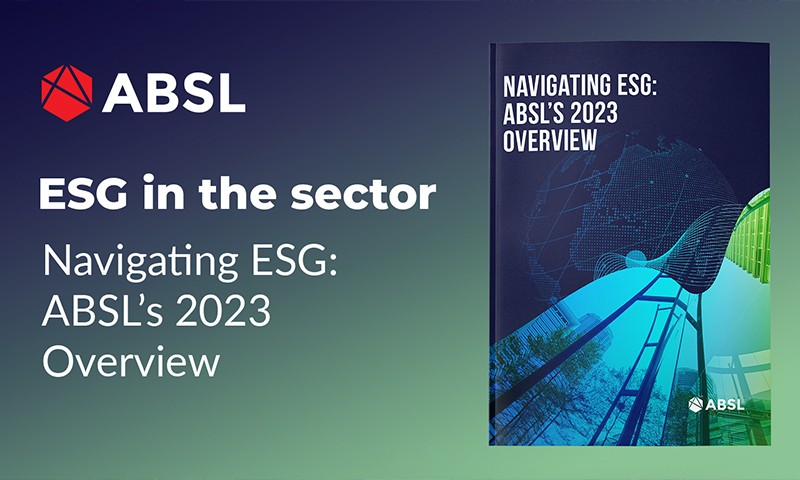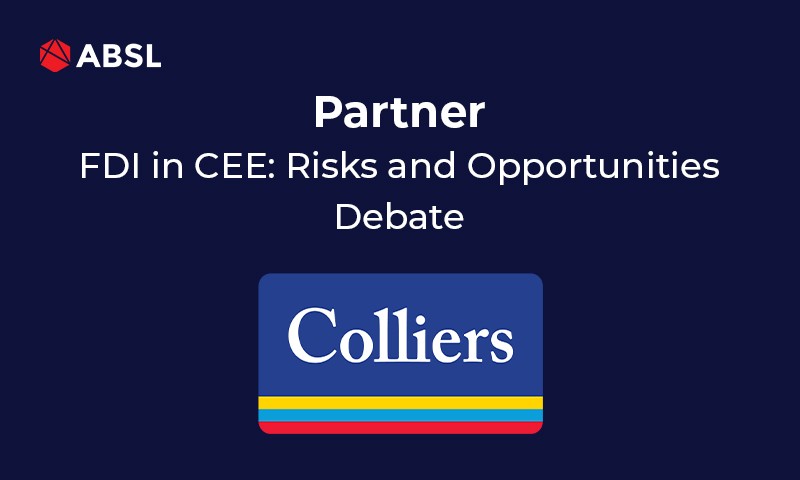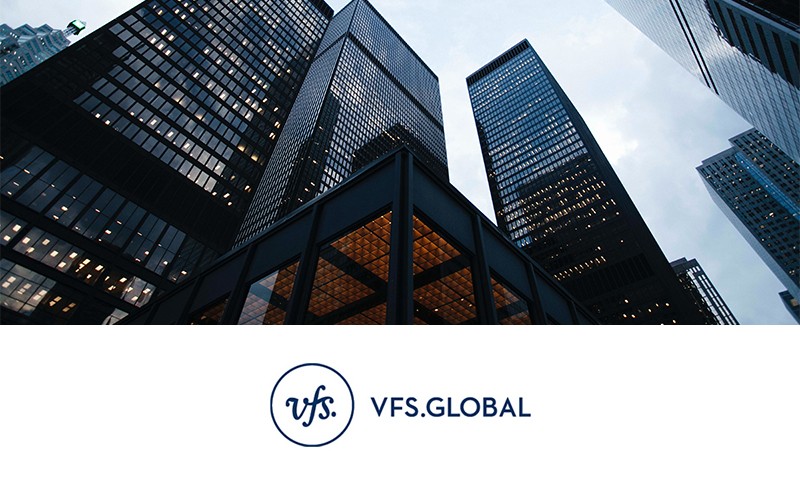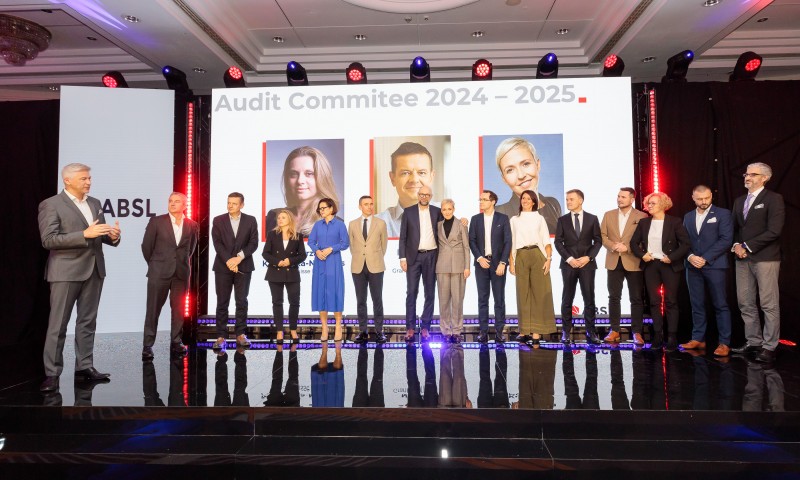Responsibility, resilience, climate. Translating ESG into actions
May you live in interesting times, says an ancient curse, widely attributed as Chinese. In fact, interesting time is the reality we’ve been living and operating in for a while. In 2019 we witnessed a series of extreme weather conditions in various parts of the globe, including massive bushfires in Australia, heavy rains and flooding across Asia and earthquakes on different continents. When we thought that bad news was over, the coronavirus pandemic hit and has been with us ever since. When – thanks to vaccination, enhanced health and safety rules and simply caring for each other – we finally started seeing the light in the pandemic tunnel, with market sentiment and investment appetite gradually improving, the global community is now facing another tragedy: the war in Ukraine and the biggest humanitarian crisis in Europe since WWII.
The current geopolitical situation brings the importance of sustainability, or ESG if you like, to the next level. To begin with, the war highlights the importance of “S”, meaning the social impact corporations are making – supporting employees and communities. In the very early days of the war, public opinion was flooded with statements about the support the business world had offered to their staff members impacted by the war, as well as the people whose country was invaded and closing their operations in the invading country, Russia. “G”, which stands for good governance and ethics, is also visible in the international community’s response in the form of powerful sanctions we have never seen before. And given Russia’s very strong position on the oil & gas market, “E”, which stands for environmental impact, is reflected in the very strong commitment among national and international political and business leaders to speed up the transformation towards renewable and alternative energy sources, towards a more sustainable world.
One of the things that will hopefully continue once the brutal war ends, is the enhanced awareness of the positive ESG impact that we can make as individuals and businesses, and this awareness being reflected in companies’ strategies.
Formal foundations, tools and measures
ESG is not a new concept. It has been with us for years but it has dramatically gained in importance over the last decade or so as more and more people and businesses around the world are impacted by climate change. Being a global challenge, climate change cannot be addressed effectively by single countries or regions, it requires worldwide connection and collaboration. The Paris Agreement united almost all of the world's nations – for the first time – in a single agreement on cutting the greenhouse gas emissions which are causing global warming. Signed by over 190 countries, it marked a turning point in the world’s approach to climate change. Its key accomplishment was the setting of climate goals: holding the increase in global warming to less than 2 degrees Celsius, with the aim of limiting it to 1.5 degrees Celsius.
Another important document setting the foundation for the ESG framework across Europe was the European Green Deal, EU’s strategy for a climate-neutral economy. Dated 2019, it sets out goals (achieving net zero by 2050; ensuring economic growth decoupled from resource use; a just transformation of the economy) that are expected to transform the EU’s economy into a modern, resource-efficient, and globally competitive one.
Some tools were missing, though, to help understand, classify, measure and report in a consistent and comparable way the progress towards a net zero future, while preventing the so called “greenwashing”. To address this need, the European Commission created the EU Taxonomy, a classification tool for investors, companies, and financial institutions that defines the environmental impact of economic activities and specifies the criteria organizations must meet in order to be considered sustainable. Since January 2022, the biggest business players operating in the EU are obliged to execute non-financial reporting in line with the EU Taxonomy, with more entities to be included in this obligation next year.
Since the built environment accounts for nearly 40% of all energy-related carbon emissions in the world, European Union’s policymakers proposed a dedicated legislation package to support the achievement of climate goals in this industry, called Fit for 55. It covers such areas as the use of renewable energy sources, energy efficiency, energy taxation, and land use. This underlines the significant role real estate plays in the overall emission reduction ambitions and that is why when thinking about company premises, be it buying, developing or renting an office space, one should remember it has a material impact on the company’s ability to deliver on its sustainability strategy. An office that supports environmental, social and governance goals can serve as a strong physical reflection of this strategy, company values and commitment to drive the sustainable agenda.
Last but not least, it’s important to mention Sustainable Development Goals (SDGs), which set the big picture for ESG ambitions and actions. SDGs were adopted by the United Nations in 2015 as a universal call to action to end poverty, protect the planet, and ensure that by 2030 all people enjoy peace and prosperity. They are integrated— they recognize that action in one area will affect outcomes in others, and that development must balance social, economic and environmental sustainability. Aligning the sustainability strategy with SDGs addressing areas where we can have an impact is a way of structuring how a company is contributing to the delivery of these goals.
Implementing ESG on company level
It’s important to start with proper governance, which starts at the top of company structure. The Board, who holds the ultimate accountability towards shareholders for the company’s long-term resilience, should make sure that ESG is high up on the strategic agenda, that its members have diverse knowledge, skills and experience to make decisions and set goals in this area. It’s the Board’s obligation to run the materiality assessment in a short, medium and long-term perspective to understand the related risks and opportunities to be integrated in the company’s strategy. It’s also important to incentivise executives to promote and push the ESG agenda forward. In addition to the financial goals set in the executives’ performance scorecards, there should be ESG-related targets as well. Another important area is reporting and disclosure. It’s crucial to inform your stakeholders about the progress you’re making in the ESG area. Nowadays the majority of investors take their asset allocation decisions on the basis of a strategy analysis with environmental, social and governance factors being very important, if not critical, in this decision-making process. It’s also important to benchmark the market and understand good practices. It may speed up the pace of transition towards a more sustainable way of working and save money if you follow good examples from other companies instead of “reinventing the wheel” on your own.
What gets measured, gets done – you need to have some target to relate to and measure the progress. While setting your goals, it’s worth getting familiar with the Science Based Targets initiative, a global body helping businesses set ambitious emission reduction targets in line with the latest climate science. Science-based targets provide a clearly defined pathway for companies to reduce greenhouse gas (GHG) emissions, meaning how much and how fast they need to reduce. Targets are considered ‘science-based’ if they are in line with what the latest climate science deems necessary to meet the goals of the Paris Agreement – limiting global warming to well-below 2°C above pre-industrial levels and pursuing efforts to limit warming to 1.5°C. Currently more than 2,000 businesses around the world are already working with the Science Based Targets initiative (SBTi), and Skanska is one of them. In the real estate industry, investments are long-term and hence the industry needs to think well-ahead to make sure buildings it develops are future-proof and do not become obsolete in 5 years as regulatory requirements tighten. When targets and the monitoring methodology are in place, the next thing to do is reporting. It’s not only a regulatory requirement that applies to more and more companies, but also something that investors, business partners and employees increasingly pay attention to while making their investment, trade or employment decisions.
It’s also worth considering exposing your company to external audits and certification processes, conducted by reputable independent organizations with relevant expertise. It provides valuable insights into what’s working well and where the areas for improvement are in terms of doing business in a sustainable way, but also enhances the reputation of companies who successfully complete the audits or certification processes, which is often confirmed by obtaining a rating, a certificate or a ‘badge’ to be used in communication with various stakeholders. This, in turn, helps stakeholders quickly figure out if an organization or its products meet their basic ESG expectations, without conducting detailed and time-consuming analyses. For example, on corporate level Skanska achieved Leadership level A- in the CDP Climate Change rating and ‘AA’ in MSCI ESG Ratings, while continuing to be included in the FTSE4Good Index and the Nasdaq OMX Stockholm 30 ESG Responsible Index. On product level, the company develops offices with LEED, WELL and BREEAM certificates.
ESG the Skanska way
Skanska is a leading international project development and construction company, operating in selected markets in the Nordics, Central & Eastern Europe, the UK and the USA. Sustainability has been an integral part of its group strategy.
Skanska’s goal is to achieve net zero carbon emissions from its own operations and the value chain not later than in 2045 and is accredited by the Science Based Targets initiative (SBTi), which confirms that the company is contributing to achieving the Paris Agreement target.
It’s important not only to have science-based goals set but also to measure and follow up on carbon performance – this is essential for developing solutions to reduce emissions. Skanska’s experience in sustainability reporting spans 25 years. It started in 1997 with reporting on its environmental impact in the form of dedicated “Environmental reports”, to grow into a broader publication entitled “Sustainability reports” between 2002 and 2018. Since 2019, sustainability is reported jointly with Skanska’s annual report to demonstrate the strategic importance of ESG in this organization.
Skanska is currently reporting scope 1, 2 and 3 emissions, where scope 1 represents emissions generated directly by the company, scope 2 includes emissions indirectly caused by the organization’s operations (e. g. emissions from the generation of energy, heating, or cooling) and scope 3 covers all other emissions connected to the organization’s activities (e. g. generated by its suppliers). Companies that do not disclose their emissions or do not report in line with reporting standards (e. g. EU Taxonomy) may exclude themselves from doing business with more ESG-conscious partners and clients. More and more entities are asking potential suppliers for information about the impact they’re making prior to closing a deal. For example, Skanska conducts relevant screening and requires that its supplier code of conduct is part of every contract signed with business partners.
A large amount of emissions originates from the production of materials such as concrete, steel and asphalt, as well as the use of our buildings. Achieving the goal of becoming carbon neutral requires innovation and partnership with various players. To better understand the areas where the company can make a biggest positive impact, Skanska conducts materiality assessment every two years, in which it asks its key stakeholders for insights that are used to develop solutions across all prisms of ESG.
Once identified, Skanska works with its employees, suppliers, partners and local communities to take actions that make a difference in these areas. When it comes to the “E” part, Skanska runs awareness campaigns for its employees (Climate Campaign), takes the office projects it develops through LEED certification processes leading to obtaining relevant certificates, implements low-carbon solutions in its projects (e.g., low-emission concrete, which was used on a large scale for the first time on the P180 office building in Warsaw) and climate-smart solutions in the neighborhood of its projects (e.g. replacing the traditional concrete used to build pavements with green concrete, which cleans the air and reduces the concentration of nitrogen oxides NOx that are hazardous to human health), shifts towards nature and wood within building materials used while developing its projects (e.g. timber building structure), creates partnerships to accelerate green transformation (e.g. with Go4Energy and Transition Technologies within the BMSCare project, which enables better use of building data, increasing energy efficiency and reducing carbon footprint) and many other activities. When it comes to the “S” part, Skanska runs awareness campaigns for employees (e.g. during annual Safety Week), takes its office projects through WELL certification processes to obtain relevant certificates, as well as through the ‘Building without barriers’ certification, which confirms inclusiveness of individuals with disabilities, invests in Employee Resource Groups (ERGs) (Place of Pride LGBTQ+ Network that gathers employees who are part of the LGBTQ community and allies and Body & Mind Network that brings together employees with visible & non-visible disabilities), makes sure its staff is gender-balanced, working to reduce the gender pay gap and promote female talents in our male-dominated industry. The positive social impact Skanska is making is not limited to internal, the company also supports the external communities, for example by responding with resources and employees' willingness to help when unexpected needs arise (e. g. by offering one of its office buildings in Warsaw to be used as a shelter for war refugees from Ukraine) and working with local communities while designing the surroundings of its buildings to better support the needs of these communities. Last but not least, Skanska also takes a number of actions in the “G” area. Making sure that suppliers adhere to the Supplier Code of Conduct, exposing oneself to audits from other professional organizations or making the company transparent in every way – sustainability reporting has been its tradition for a quarter of century.
The above text was prepared on the basis of content shared by Katarzyna Zawodna-Bijoch, President and CEO of Skanska office business unit, during a webinar on ESG in practice prepared for ABSL Poland members. More details about each area of ESG will be covered during the upcoming webinars from this series, with the nearest one planned to be focused on social impact (the “S”) taking place on May 10th, 2022. To register, please follow this link.









